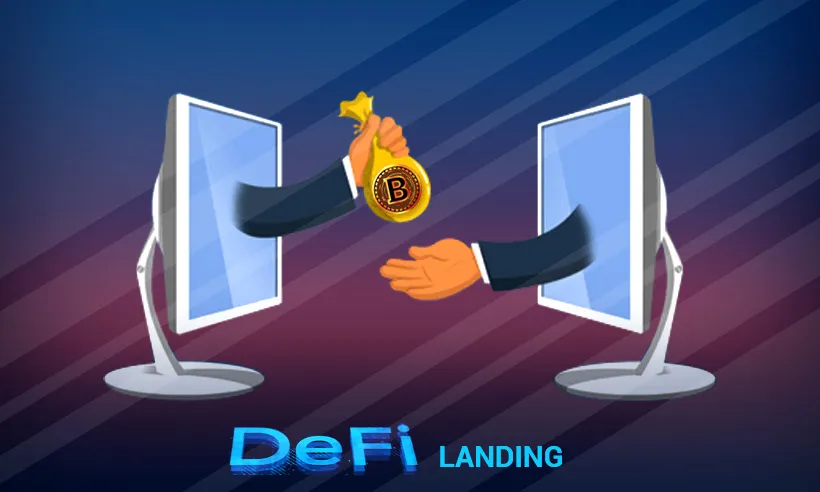DeFi Lending Platform launch: Benefits and Drawbacks of DeFi Lending

Lending transactions in decentralized finance (DeFi) are based on crypto assets and carried out via smart contacts, doing away with the need for middlemen like banks.
DeFi Lending Platform launch
Define the Vision and Objectives of Your Platform
Establish the precise focus, target market, and differentiating features of your DeFi lending and borrowing platform development. Determine the issues you want to resolve and the benefit you provide to people.
Carry Out Market Analysis
Examine the market for DeFi lending as it is, note any rivals, and learn about user requirements and preferences. Analyze industry trends, demand for certain lending processes, and possible niche market possibilities.
Establish the Platform Architecture
Create the DeFi lending platform’s technological foundation. Choose a suitable blockchain, such as Ethereum, as your platform of choice. Set the standards, protocols, and tools for smart contracts that will enable lending capability.
Creation of Smart Contracts
Create and extensively test the smart contracts that will control your platform’s loan and borrowing procedures. Consider creating contracts that will provide security and dependability for loan origination, interest calculation, collateral administration, and loan payback.
Design and Development of User Interfaces
Make your DeFi lending platform’s user interface simple and easy to use. Create user flows, interactive components, and displays that make it easy for users to engage with your platform. Depending on who your target audience is, create a mobile app or a responsive web application.
Auditing and Security
Conduct thorough security assessments of your platform infrastructure and smart contracts. Hire outside auditors to examine your code, find flaws, and provide suggestions for changes to your platform’s security.
Obtain the Required Licenses and Follow the Rules
Recognize the legal requirements and regulatory regulations that apply in your country. To guarantee compliance with relevant laws, such as anti-money laundering (AML) and know-your-customer (KYC) rules, seek legal counsel and get any appropriate licenses or permissions.
Test and Use
To verify your platform’s speed, security, and usefulness, thoroughly test it. Run load tests, simulate real-world conditions, and take care of any problems found. Deploy your platform on the selected blockchain network as soon as you are pleased with the testing findings.
Liquidity Control
Create sources of liquidity for your platform. To guarantee enough liquidity for lending and borrowing operations on your platform, take into account connecting with already-existing liquidity pools, decentralized exchanges, or decentralized finance protocols.
Advertising and User Recruitment
Create a marketing plan to advertise your DeFi loan system. Use partnerships, social media, SMS marketing, and community involvement to your advantage to draw customers. To build trust and momentum, be sure to express your platform’s value proposition, security features, and user advantages clearly.
Supporting Users and Involving the Community
Create platforms for user involvement and support. To help users use your platform, provide comprehensive documentation, tutorials, and FAQs. To continually develop your platform, promote user input and recommendations by fostering an active community.
Observe and Refine
Keep an eye on your DeFi lending platform’s performance at all times, paying particular attention to user activity, liquidity usage, and security. Obtain user input and make platform improvements based on user requirements, market dynamics, and new trends.

Benefits and Drawbacks of DeFi Lending
DeFi lending platforms provide a number of benefits for borrowers over conventional loan sources. Irrespective of geography or credit history, DeFi lending platforms are available to everyone with an internet connection. Since there are fewer intermediaries involved when collateralized debt positions (CDPs) are used, loans via DeFi lending platforms are often less expensive than loans from conventional sources.
DeFi lending systems are, first and foremost, still rather new and unproven. The numerous DeFi protocols and platforms constructed on top of the underlying blockchain, Ethereum, which is the most widely used DeFi blockchain, may not be as well-proven as the underlying blockchain itself. The likelihood of faults, weaknesses, and hacks is substantially greater in the DeFi industry.
Conclusion
The primary conventional financial services including payments, trade, investing, insurance, lending, and borrowing are all attempted to be decentralized. Due to its involvement with this fascinating technology, defi financing has a lot of potentials to completely alter the world of finance.